Table of contents
Who is the orixá Obaluaê?
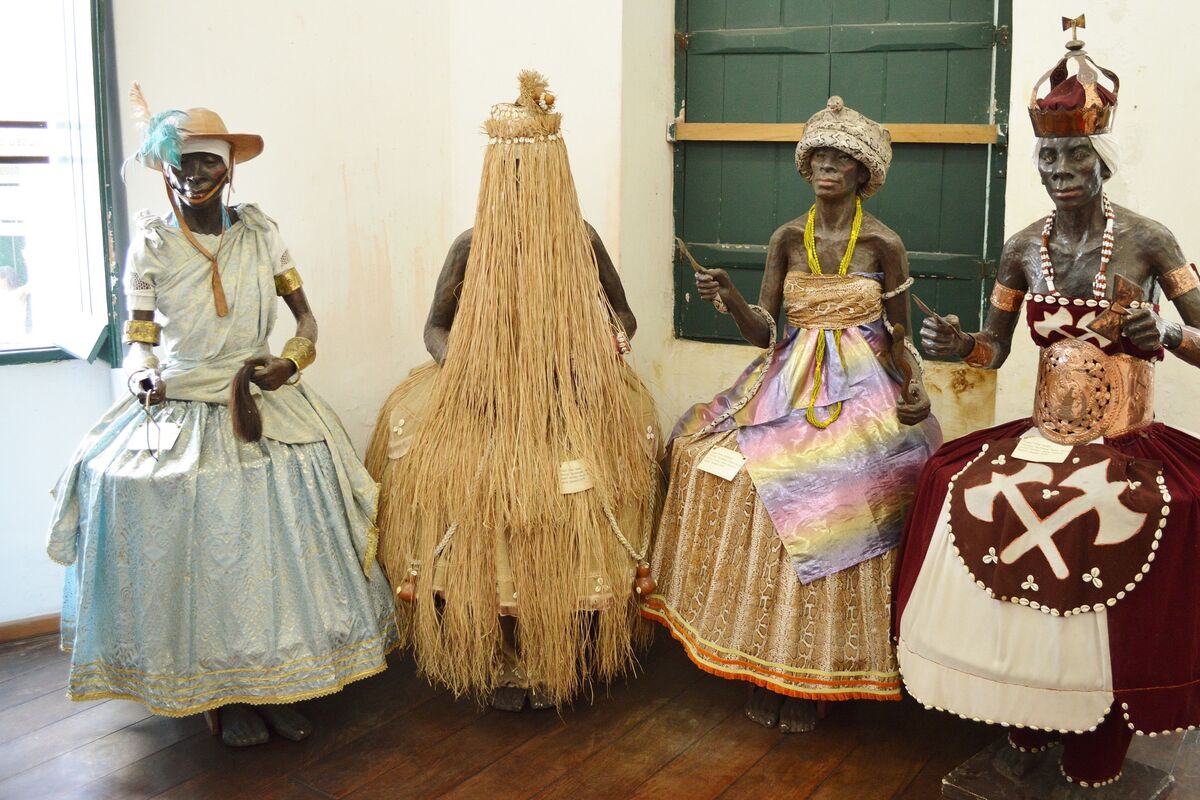
The orixá Obalauê is one of the seven main orixás of the Afro-Brazilian religions Umbanda and Candomblé and is considered the deity of health and healing. He can also be known as Xapanã, Omolu, Obaluaiê or Omulu.
In relation to the Catholic roots, there is a syncretism of Obalauaiê with Saint Lazarus and of Omulu with Saint Roque. This deity is considered the most feared of all, for having control over fire, earth and death, once it can start an epidemic or stop all the sickness that is afflicting someone.
Therefore, he is the orixá that sees everything, seeing even the smallest details of people's lives, and nothing can be hidden from him. In addition, he mediates between the spiritual and physical worlds, being the proof that everything is surmountable, as long as you want to live.
In this article, we will show the main aspects of this orixá so highly regarded in the religions of African origin.
Knowing more about Obaluaê
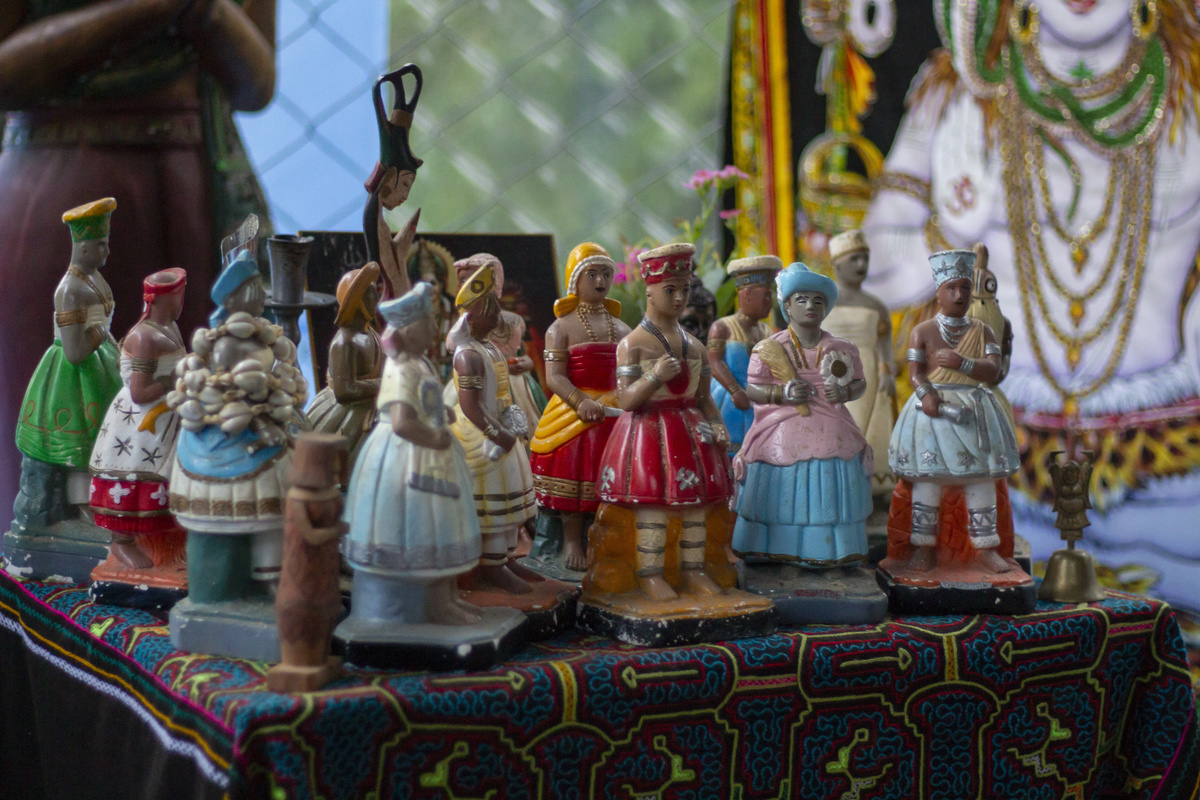
Obaluaê is an important deity who carries an interesting history and has peculiar characteristics that have made him the focus of many scientific studies and the central theme of doctoral theses at renowned universities. To learn more about his history, characteristics and powers, keep reading!
Origin and history
The orixá Obaluaê has a history of much suffering, due to illnesses that left hideous scars on his body throughout his life. Brother of Oxumaré, son of Nanã and Oxalá, he was born with complications characteristic of smallpox, due to an argument that his parents had during pregnancy.
When he was born, his physical appearance was so repulsive that Nanã abandoned Obaluaê by the sea to die. Some time later, Iemanjá found Obaluaê all deformed by the sea, in a deplorable situation of being eaten alive by crabs, and decided to adopt him, teaching him to heal illnesses and to have compassion for the sick.
Obaluaê, as a result of all this childhood history, grew up withdrawn and ashamed of his body, marked by the scars of the past, which reflected in his difficulty in socializing. As for his clothing, there are two stories: one points to the making of his clothes of straw by Obaluaê himself and another says that Ogum made the hood of straw to stimulate the socialization of the orixá.
Therefore, the first story says that Obaluaê himself, tired of his sickly physiognomy, went to the bush and made a straw cloth that covered him completely, leaving only his arms and legs partially exposed.
The other historical line states that, during a festival of the deities, Ogum noticed the absence of Obaluaê, who used to attend, even if shyly, and, when he discovered that the orixá did not attend due to his appearance and shame, he looked for him and took him to the bush, where he made a long hood of straw, to cover his body and be able to attend the party without shyness.
This same aspect affirms that, during the party, Obaluaê remained still, without dancing, and that Iansã went to him. Recognizing all his suffering and his history, she blew on his shoulders and the scars became past, revealing the beautiful figure of a captive man, healthy and radiant as the sun.
Visual characteristics
Obaluaê has a very characteristic outfit, with straw covering most of his body, leaving only his legs and arms visible.
This garment has two parts: the upper one, which covers the head like a hood, all braided and called "filà", and the lower one, which covers the intimate and forbidden region of the entity, working as a skirt, called "azé".
In some cases, there may also be the presence of a "xokotô", which would be a pants wrapped with the meaning of rebirth and death. There may also be small pockets in this piece, for carrying the medicines he uses in his cures.
Obaluaê's clothes can be made of fabrics in shades of red, black and white, plus beads and cowrie shells that promote a dispelling magic of the sorrows of those who approach to ask for blessings.
Pierre Verger, a great scholar of African religions, in his book Orixás, states the following:
"The people who are consecrated to him wear two types of necklaces: the lagidiba, made of tiny black discs strung together, or a necklace of brown beads with black stripes [...] His yokos dance entirely clad in straw from the coast. Their heads are also covered by a hood of the same straw, whose fringes cover their faces.
Taken together, they look like small mounds of straw, on whose underside appear legs covered with lace trousers and, at waist height, hands brandishing a xaxará, a kind of broom made of palm leaf ribs, decorated with cowries, beads and small gourds which are supposed to contain remedies."
Obaluaê and the protection of health
Asking the orixá for health can be considered disrespectful, because Omulu or Obaluaê have no health to give, they are only able to take sickness away.
According to the babalorixá Sidnei Barreto Nogueira, a scholar at the University of São Paulo (USP), Obaluaê is the disease itself, the inflammation, the fever, the pain, the plague, the allergy, because it is necessary for the deity to have diseases, so that he can have empathy for those who seek to get rid of them.
In this way, Obaluaê traveled the world and this baggage of knowledge about the diseases that permeate him brought great empathy, since he suffered with humanity the core of their diseases. As a result of this experience, the orixá decided to always remain more silent before others, since he observes what is happening rather than participating.
Obaluaê and the healing of diseases
The orixá Obaluâe or Omulu can make sickness go away through their spiritual help and faith in their image. Because they suffered intensely from smallpox in the past, they have a lot of empathy for those who seek to get rid of an illness and demonstrate the will to live and to have health in their innermost being in a purely true way.
Vicente Galvão Parizi, in "O Livro dos Orixás", already states:
"Obaluaiê is the Orixá that keeps us from all illnesses. By illness we mean human suffering in its broadest sense: physical, mental, psychic, emotional. In general, we ask Obaluaiê for help in matters of physical illness, but it is to him that we should turn in cases of psychoses, neuroses, anxiety, depression, anguish and despair.
He can help not only because he is the lord of medicine - his intercession can help doctors discover the right remedy - but also because much of disease has a spiritual origin."
Relationship of Obaluaê with other orixás
Obaluaê is a very shy and sometimes withdrawn orixá. However, we know that this posture is because he is an entity that observes more than acts, and may give the impression of being antisocial.
He is highly respected among the orixás, for being considered the god of healing and for working directly with the themes of death and rebirth. He is also feared, for he is the disease itself and, while he can cure them, he can start an epidemic that decimates an entire population.
Obaluaê is closely related to Xangô and Exú, and is feared for his punishments. In his accounts, he often jokingly refers to Xangô as the one who makes a fuss about killing one person, while he takes the lives of thousands in a totally silent manner.
Beliefs and Obaluaê
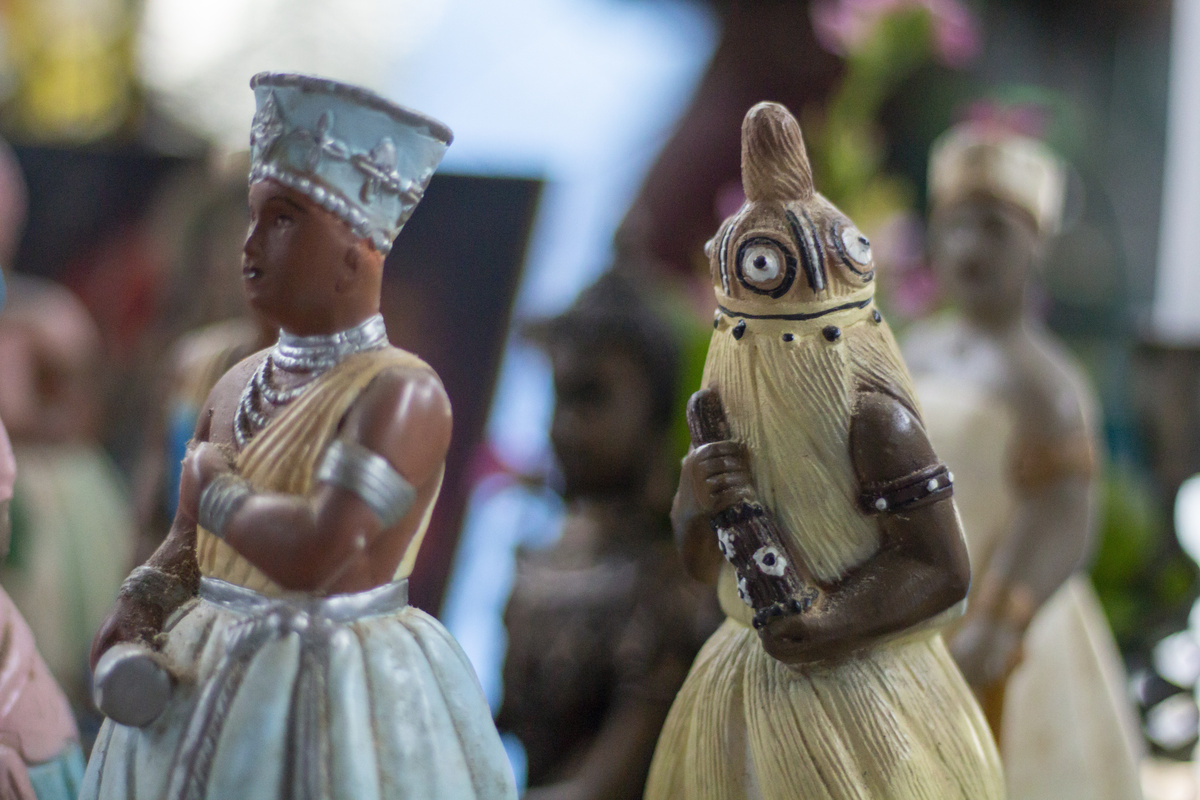
The orixá Obaluaê is an entity present in several religions, through similar accounts. There is great syncretism between this deity and those of other religions such as Catholicism and Santeria. Check them out below!
Obaluaê in candomblé and umbanda
In both Candomblé and Umbanda, Obaluaê is a feared entity, for having in his hands the power of healing, when he pities the poor sick, or the power of death, for those who deserve punishment. He is considered the all-seeing orixá. Within these religions, the faithful believe that the entity possesses the gifts of spiritual healing, to which they resort in situations of illness.
Obaluaê is also known as the entity of the sick poor. Because he spent a long period of his life stricken with the ravages of smallpox, Obaluaê has great empathy for those who are sick and who wish to live, and is afraid of death.
It is an entity that rules the earth and everything that is born or dies from it, being associated with the earth in its hot state, represented by fever and sweat. Fever is the sign of the disease that devastates the body and sweat has the meaning of healing that comes to ease or cure the disease.
These religions believe that Omulu, or Obaluaê, carries his wooden spear, lagidibá and Xaxará, as energetic tools of good will. The straw clothing should not be removed, because the intense brightness that Obaluaê possesses, acquired after the breath of Iansã, would kill any human being.
Those who receive the entity, besides having the traditional garments made of straw from the coast, usually present themselves bent over, with physical features that express suffering and pain.
Obaluaê in the Catholic Church
Afro-Brazilian religions have great syncretism with saints of the Roman Catholic religion. Syncretism is nothing more than the absorption of one religion by another, having the same precepts in theory, but with different names. It is known that Umbanda and Candomblé have multiple Catholic traits, since, in its origin, there is a root of this religion.
In this way, Obaluaê has syncretism with two saints of the Catholic Church, considering that, although Obaluaê is considered one entity, he can take the form of two at different times.
It is considered that Obaluaê is the youngest form of the entity, being known as lord of the evolution of beings, from a material to spiritual life, and has syncretism with São Roque, since both protect the sick who are in poverty. Within Catholicism, São Roque is always sought for the blessing of surgeons, since he is known as the saint of diseases, just like the orixá.
Omulu, on the other hand, is considered the most mature and centered entity and has syncretism with Saint Lazarus, who is acclaimed for the protection he offers lepers and beggars. Like Omulu, Lazarus also faced a great illness during his earthly life: leprosy. This helped him to have faith and find a cure.
Obaluaê in Santería
The religion of Santería has roots in the indigenous peoples of America, in Christianity and in Yoruba, having similar aspects to African and Afro-Brazilian religions. In Santería, Obaluaê is known as Babaluaiê.
Within the religion, the image of Babaluaiê is associated with the forest, the road and the absence of stagnation, contrasting with dynamism, and during the cults the exchange of objects from place can be observed. In this sense, the image is associated with herbs with healing effects and with the magic of magicians. When associated with the earth and ancestry, the entity may receive cults with honors from death.
Regarding wickedness and righteousness, Babaluiaê is seen as a lame figure, who has in the pain of his leg the representation of the reflection of his wickedness of old, which was also responsible for placing him in exile and righteousness. There is a dichotomy in this sense: while he delivers a punishment to humans, he is considered the most righteous of the orixás, because of his accurate judgment.
Babaluiaê is the entity that rules pain and suffering. Because of his past with smallpox, he is considered the "god of smallpox" by the faithful, having dominion over the disease and carrying out punishment with sickness or blessing through health.
The worship of Babaluiaê encompasses a mixture of secrecy and revelation. We know that the orixá is considered more withheld than others and this involves an atmosphere of secrecy for worship. Many aspects should not be revealed during services, as they could worsen the picture of an established disease. But the revelation of certain mysteries at opportune times is able to contribute to healing.
Regarding the theme of death and resurrection, Babaluiaê is the remedy or the beginning of great epidemics. Everything happens according to the behavior of those who live in a place ruled by the orixá. Therefore, he is very much associated with the earth, since he rules everything that is born from it and everything that returns to it.
Obaluaê in other cultures
Obaluaê may be known as Xapanã within other Afro-Brazilian religions such as Babaçue, Quimbanda and Encantaria. In this context, Xapanã would be a much feared warrior, also associated with smallpox, and those who dared to defy him would come out of battles carried away by the plague or killed by it.
Xapanã is worshiped in practically all Afro-Brazilian religions and is seen, in all of them, as the god of healing and illness, being able to determine a person's state of well-being, according to their behavior and deserving.
In all these religions, the image of Xapanã is that classic straw vestment of the coast, having a covering from the top of the head to the feet. Also present are the conch and beads that contribute to the distribution of positive energy to those sick people who need healing.
In this way, Xapanã disintegrates the charges of negative energies and favors a good recovery, being considered the spiritual doctor among the orixás. However, the main illness that he treats would be the diseases that affect the skin, for having had smallpox in the past and for knowing how much suffering it can be for those who carry it.
Qualities of Obaluaê
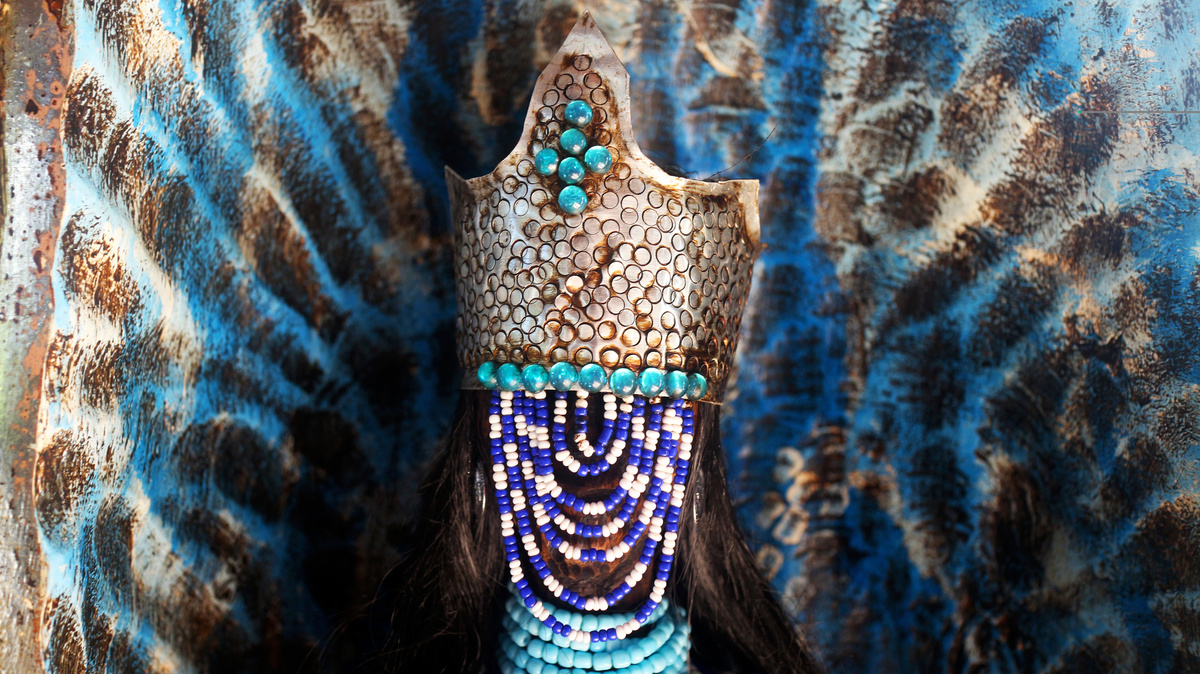
The qualities of saint are considered derivations that bring greater specificity to an orixá. Each quality of Obaluaê presents some distinctions in relation to the main categorization, making each derivation even more unique, whether because of origin, brotherhood, proximity to other entities or by what is fed. Follow them all below!
Afoman
Afoman is an entity of Obaluaê who wears yellow and black, distinct from the traditional colors red, white and black, and has tow and two pouches in his clothing. He is close to Ogum, Exú, Oxumaré and Oyá and buries bodies destined for him in graves made with Intoto.
The pouches are considered the places where diseases are and he has dominion over all climbing plants and their growth.
Agòrò
Agòrò is a quality of Obaluaê that wears only white and has larger straw details (fringe, called biokô) on the azé (skirt).
Akavan
For the appearance of Akavan, quality of Obaluaê, his clothing is printed. He has great proximity to the orixá Oyá and walks with Iansã.
Ajágùnsí
The quality Ajágùnsí, of the orixá Obaluaê, brings great proximity to Ewà, Oxumaré, considered a brother of Obaluaê, and Nanã, who supposedly left the orixá to die in the open, because of his wounds.
Azoani
Azoani, quality of Obaluaê, has great affection for the garment containing red straw. With a very jovial spirit, he has great sympathy for Iroko, Oxumaré, Iemanjá, Iansã and Oyá.
Azonsu
Also known as Ajunsun, Azonsu is a great sympathizer of his friends Oxumaré, Oxun and Oxalá. This quality of Obaluaê likes to wear all the colors that are components of the orixá: red, black and white.
In addition, he is considered extroverted and wields a spear. He may have a metal bracelet on his left leg and fervently worships the earth.
Jagun Àgbá
There is not much difference in relation to the orixá Obaluaê and his quality Jagun Àgbá as far as clothing is concerned. However, he is closer to Oxalufan and Iemanjá.
Jagun Ajòjí
The quality Jagun Ajòjí does not differ much from Obaluaê in terms of traditional dress, but has greater affection for Ogun, Oxaquian. and Exú. In addition, it is also known as Sejí, only.
Jagun Arawe
Linked to the traditional garments of the orixá Obaluaê, the quality Jagun Arawe is very close to the entities Iansã, Oyá and Oxaguian.
Jagun Igbonà
Jagun Igbonà can also be called Topodun. He has direct proximity to Obá, Airá and Oxaguian. He also wears the traditional garments of Obaluaê.
Jagun Itunbé
Also known as Ajagun, the quality Jagun Itunbé has a peculiarity: it is the only one that eats snail (Igbin) among the orixás. On the other hand, it does not eat black beans.
Besides, he is very close to Oxaguian, Ayrá and Oxalufan. As he is a young warrior, he wields his spear called Okó.
Jagun Odé
Known as Ipòpò, Jagun Odé has affection for Inlè, Ogun, Logun and Oxaguian. This entity of Obaluaê wears biokô, a kind of fringe on his azé (skirt), as well as other qualities, such as Agòrò.
How are the children of Obaluaê
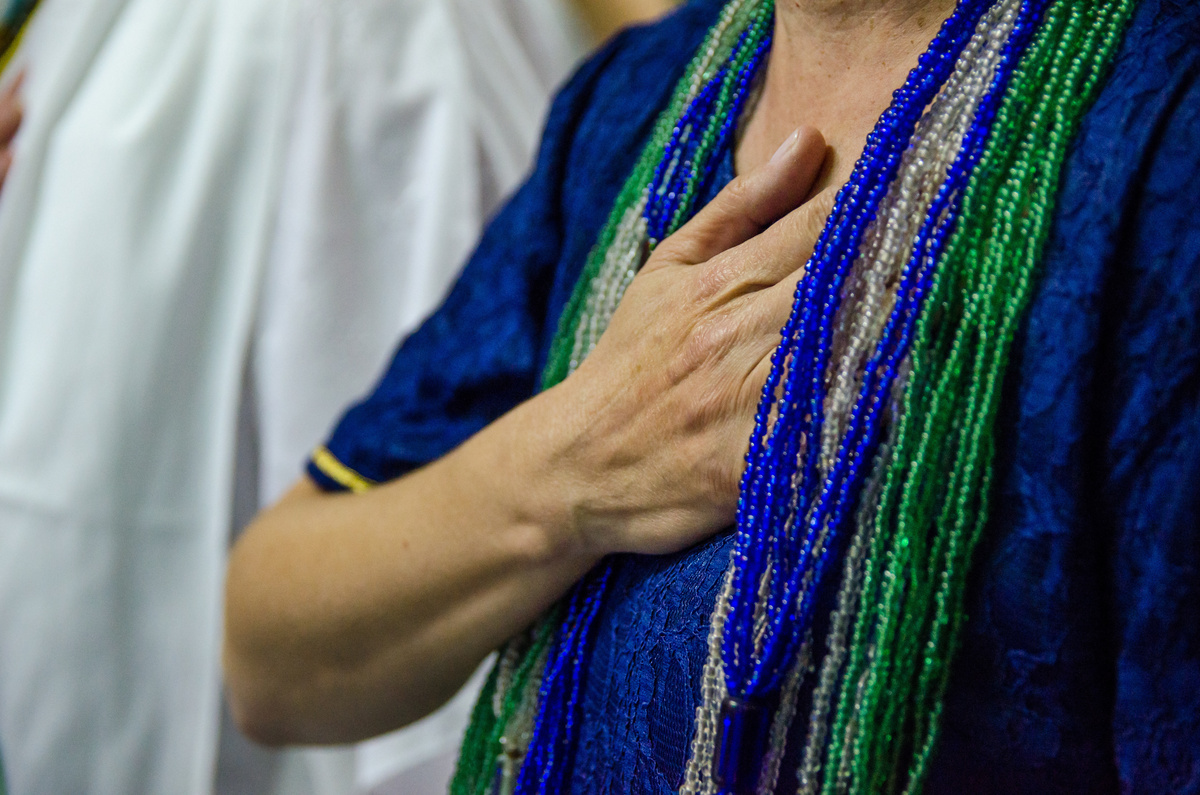
The so-called children of Obaluaê have characteristics very similar to the profile of his father, the orixá of diseases and healing. As we will see below, the semblance, behavior and posture always refer to what the father is and how he behaves before the other orixás. As the famous saying would say: "the fruit does not fall far from the foot". Check it out!
Perfectionists
Dedication is the strong point of the children of Obaluaê, taking the activities they develop to a level of perfectionism. However, these levels of perfectionism can become unhealthy and turn into a relentless demand of themselves to be better, even if they are already striving for their maximum level of dedication.
Generous
Just like Father Obaluaê, his children are extremely generous and seek to help those in need in any way they can. They give of themselves to the utmost and even make sacrifices for the good of their neighbor or those they love.
When they ascend in some profession in the health area, they become extremely well-liked by patients, for providing maximum care and dedication to the sick.
Dedicated
The children of Obaluaê are extremely dedicated to what they propose to do, executing activities with mastery. They are resilient and patient people, because they always do everything until the end and with great caution. Besides, they never give up on what they want, even if it takes forever to get to the end.
Money alone does not bring fulfillment to the children of Obaluaê, being necessary the provision of significant help to others. Children of this orixá usually feel very fulfilled in health professions, such as Medicine, Dentistry and Nursing, in voluntary humanitarian aid work or even in the scientific field, so that they can bring some contribution to society.
They are people who, although they have characteristics not favorable to socialization, need large circles of close friends. Introspection and shyness are already part of their lives and the existence of friends is necessary for there to be a balance, favoring communication, the development or discovery of feelings and increased productivity.
Thus, friendships can also counterbalance the depression and pessimism that the children of Obaluaê face, avoiding suicidal ideations.
Fragile appearance
The saying "the fruit doesn't fall far from the tree" never made more sense, because the children of Obaluaê have an appearance that transmits fragility, characterized by a distant look and the possibility of posture curvature.
Like the father, they are very observant and concerned about others, because of their empathy, and they have this appearance which can sometimes be depressive, because of some illness or disease. This can imply an aspect of physical sadness, which hides an extreme sensitivity of great intelligence.
Shy and introspective
Like Obaluaê, his children are shy, reserved and need moments alone to reflect on the world and themselves. Sometimes, this shyness can have a mysterious and wise content, which is, in fact, true. Obaluaê's children are studious, great thinkers, self-knowledgeable and calm.
Generally, they are serious and closed people, even if they have a big circle of friends. They know how to hide very well their weak points and show only a little of their real personality to the world, being difficult to really know in depth what a son of Obaluaê thinks and feels.
They are part of the type of person who is silent many times a week, because in this way they can find within themselves answers to what they are seeking in the external world. They are introverts and immerse themselves in their reading and studies, which can also propitiate a successful career in the Humanities, in professions such as researchers, scientists, teachers and writers.
Because they are always in introspection and closed in relation to the outside world, they may have difficulty in relationships. This is a reflection of the complexity they have to show some kind of feeling, because they tend to keep everything to themselves. When they are in love, in love or involved with someone, they are extremely sincere and sweet, giving proof of loyalty and devotion at all times.
The main form of affective demonstration, even so, happens in an objective way, because they are always trying to solve problems for their partner and not trying to make surprises, give gifts or make loving declarations.
Pessimists
Pessimism is a characteristic that can be associated with a depressive feeling about oneself and one's current condition. The children of Obaluaê are insecure, fearful and indecisive, they do not take risks and have depressive tendencies.
Although they are sweet, calm and resilient people, they are highly grouchy. Because they inherit the genius of their father Obaluaê, they are negative and complain about everything, like to boss around and discourage optimists, telling their frustrations and sorrows. However, when they fall in love, love or simply have a great affection for someone, they like to please and are very helpful.
The pessimistic feeling, at times, consumes the son of this orixá to the point of presenting aggressive or self-deprecating behavior, with suicidal ideations and masochistic attitudes.
Even though they present great focus, practicality, seriousness, calmness, lightness and resilience, they are people with great nuance of temperament, which makes them always prone to the development of diseases. they caprice in exaggeration and drama and tend to have psychosomatic diseases, directly related to depressive and bipolar behavior.
How to relate to Obaluaê
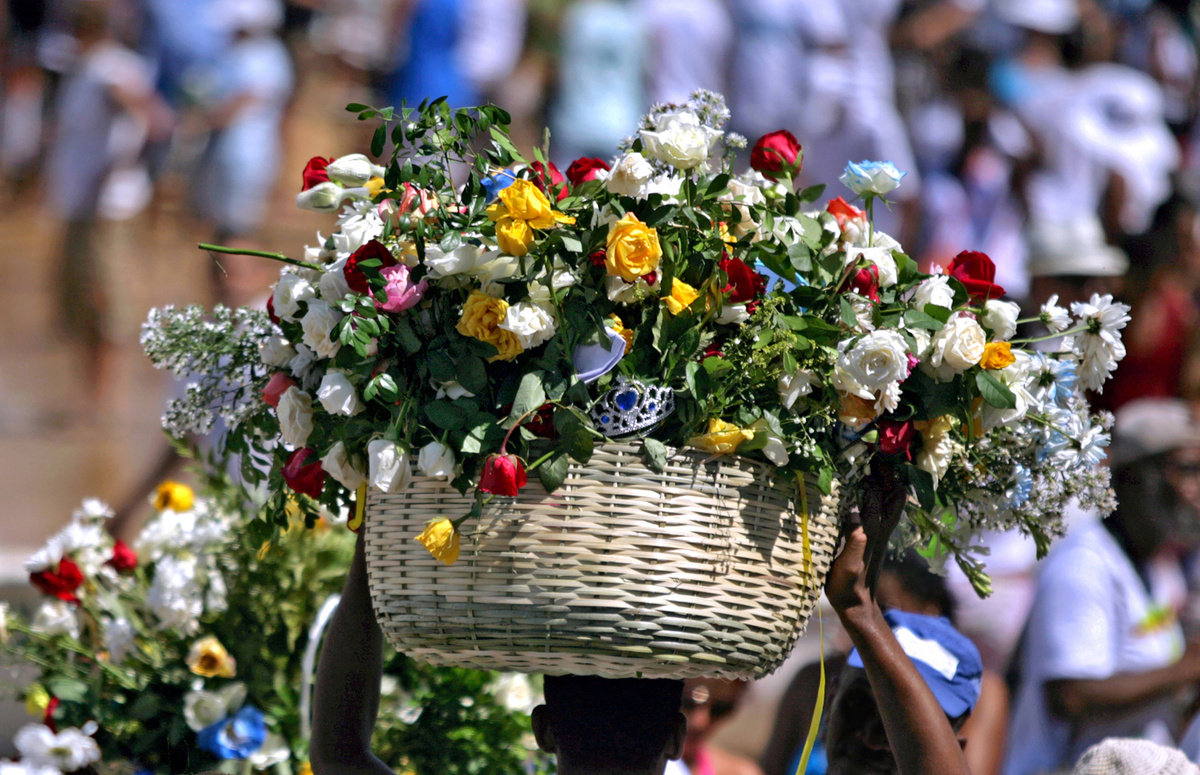
There are many ways to connect with an orixá. Below, understand the main ways to conquer the Obaluaê sympathy and seek his blessing!
Obaluaê day and number
The day of the week referred to the orixá Obaluaê is Monday and August 16th is the annual date of commemoration of the entity and its number is 13.
Obaluaê Colors
The main colors that refer to the orixá Obaluaê are red, black and white. He uses these colors in his clothes and in some qualities.
Obaluaê Symbols
The main symbol that identifies Obaluaê is the Sasará, or Xaxará, which is an appliance made of straw and magic seeds braided into the shape of a tube. According to stories, it is said to contain unrevealed secrets inside.
Herbs and leaves of Obaluaê
Being an orixá directly connected to medicine, Obaluaê makes use of most of the herbs and leaves used in Afro-Brazilian religions. The main leaves associated with this orixá are: Omulu leaf (dog cinnamon), pariparoba, mamona and cambará. Often the consumption of teas at home or even the execution of baths for purification is recommended.
Obaluaê Dance
The traditional dance of Obaluaê is called Onipajé, in which sacred songs are chanted to the sound of the atabaque and the entity moves in an ambivalent manner, left and right, representing light and darkness, healing and disease, death and life.
Obaluaê Costume
The orixá Obaluaê can have clothes in shades of red, black and white, covered by the filá (upper part) and azè (lower part) made of straw. Some of his qualities use these same colors.
Feast of Obaluaê
The feast in honor of the orixá Obaluaê is called Obalujé and is held annually. The food is served on mats and castor leaves. All the orixás are present, with the exception of Xangô and Oyá, who open the ritual by cleaning the room to place the mat on which the food will be placed.
This ritual is essential within the whole terreiro, to prolong life and to have health among the participants who attend the place. At least 9 delicacies are prepared for this ritual, being related to the characteristics of the orixás. In addition, the castor leaf is highly poisonous and symbolizes overcoming death, having food served on it.
Salutation to Obaluaê
The greeting used to the orixá Obaluaê is "Atotô Obaluaê", which means "silence for the great King of the Earth".
Prayer to Obaluaê
The orixá Obaluaê has his own prayer, which consists of the following quote:
"Hail the Lord, the King of the Earth! Physician of Umbanda, Lord of Healing of all ills of body and soul. Father of wealth and bliss. In you I deposit my pains and bitterness, begging you the blessings of health, peace and prosperity.
May Your Blessing paralyze all and any negativity that intends to make my life and my walk sick. Beloved Father, I ask You to sow within me the Seeds of the True Life, so that I behave as a child of GOD and understand the Divine Presence in me and in my fellows.
I ask for your healing support, my father Omolu, cure my spiritual diseases, which hinder my evolution. You who are the helper of the spirits fallen in the darkness of ignorance, support and guide me with your strong arms of protector of life.
Lord of the Earth, bless the ground I walk upon and sustain me to walk straight and luminous paths in Creation. Heal me from my selfishness, vanity, ignorance, rancor, from my sorrows and sadness and help me to have more compassion, joy, trust, faith, love, tolerance, patience so that I may live in harmony with those around me.
Cover my home and that of family members with your protective mantle and heal all material and spiritual diseases that surround them.
Make me a son of good cheer and disposition, to triumph in the struggle for survival and spiritual evolution. Make me worthy to deserve every day your blessings of light and mercy. Atotô, my Father!"
Offering to Obaluaê
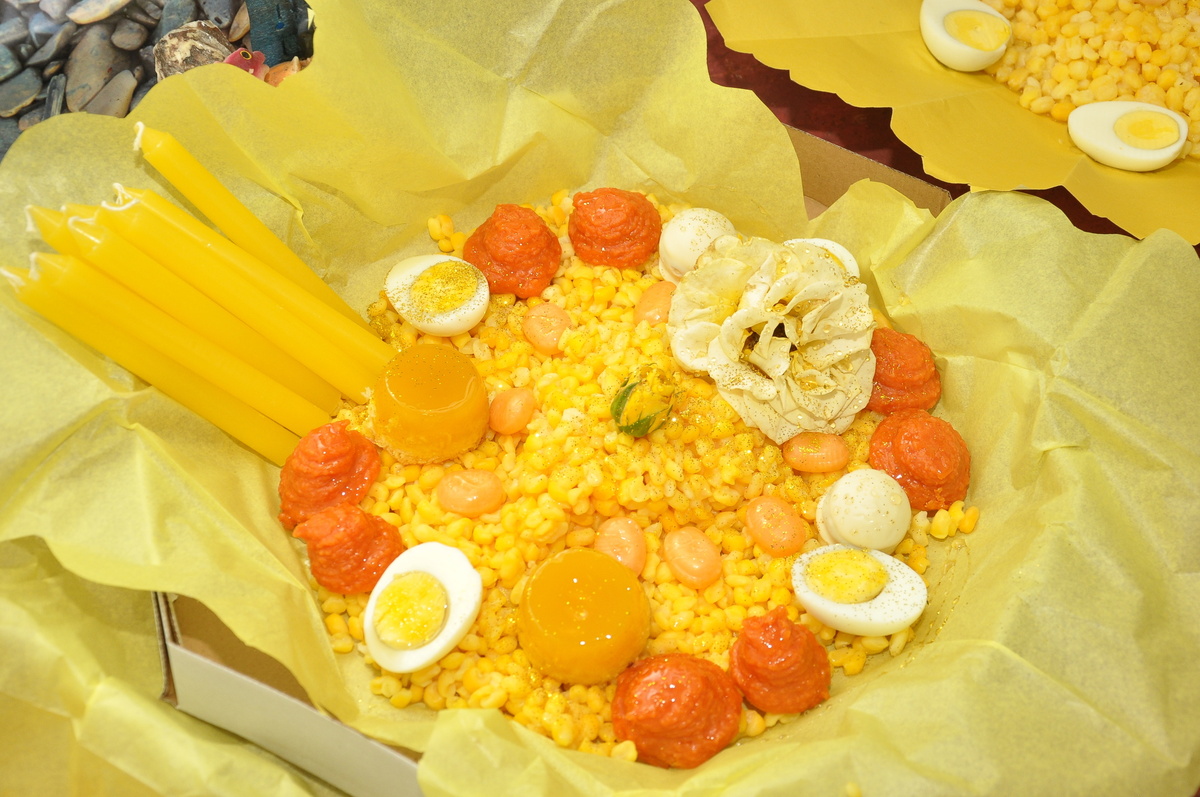
You can make offerings to the orixás to thank, honor or make requests to them. Learn how to honor and please our beloved Obaluaê below!
When to do it?
Whenever you need a blessing in relation to your health, your family or healing for some disease, make an offering to the orixá Obaluaê. Preferably, you should do this on Monday, which is your day of the week.
Ingredients
To make the offering to Obaluaê, you will need:
1. a medium straw or wicker basket
2. popcorn kernels (use the measure of one and a half cups of cream cheese);
3. olive oil;
4. a popcorn maker or other pot that can be used to pop the popcorn;
5. ripe coconut, sliced into strips;
6. pure honey;
7. 7-day white candle.
Directions
At the beginning of your offering to Obaluaê, first pop the popcorn in a large pot, or in two stages in a small pot, with two tablespoons of olive oil, and place it in the wicker basket. Arrange the coconut flakes on top of the popcorn, after it has cooled, and sprinkle everything with honey (4 to 5 tablespoons are enough).
Then, select an inconspicuous place in your home to place the assembled basket and, next to it, place the lit 7-day candle. Do not forget to mentalize what you want during the construction of the offering and to perform your prayers at the end.
Obaluaê is the orixá of healing in all its aspects!
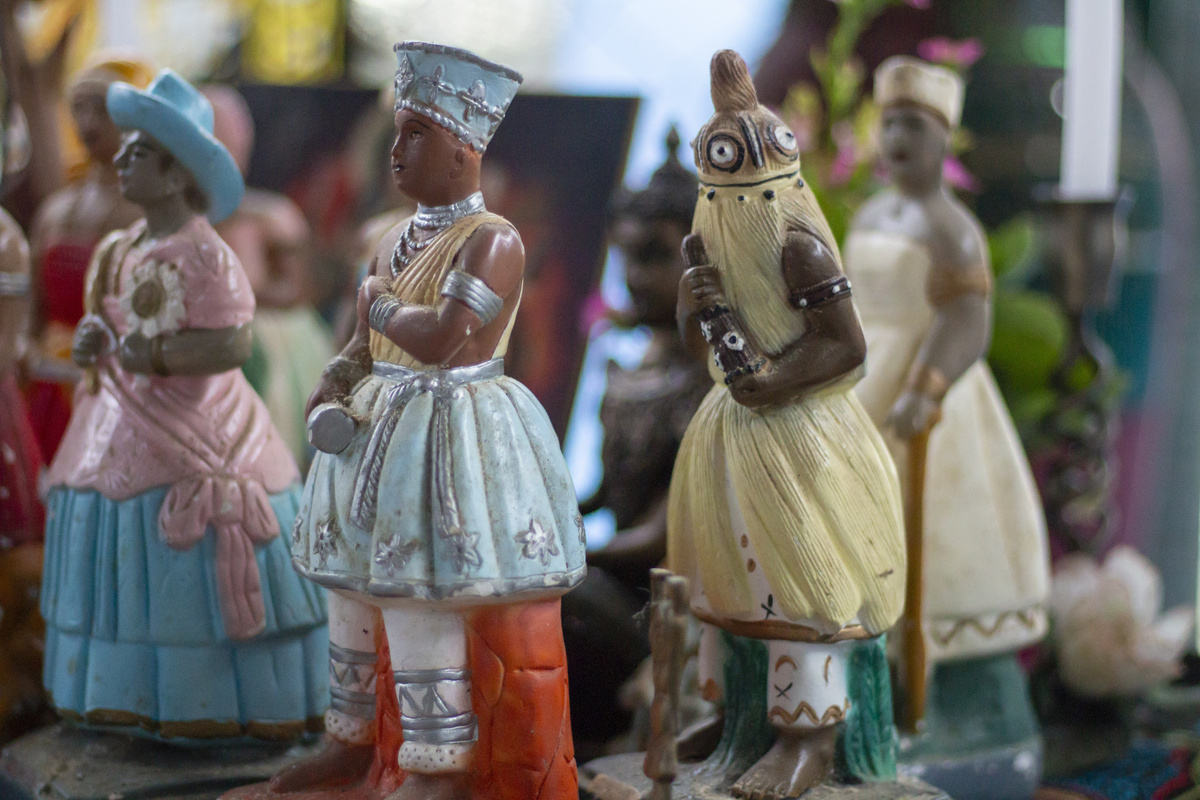
As we have seen so far, Obaluaê is an orixá with its complexities, being the one to whom life and death, light and darkness, sickness and health are referred to. He is an entity loaded with history, which is reflected in his current behavior among the orixás and before his children and believers who ask for his blessing.
Obaluaê takes care of the physical and spiritual healing of those he considers worthy of his help, as a result of their good deeds and character. His children are never helpless and can reproduce their father's characteristics, whether positive or negative.
However, he is an orixá of utmost importance within the Afro-Brazilian religions, for watching over the health of those who attend the terreiro. Feared by all, Obaluaê is the disease itself and the cure in the same person, having great empathy, especially for the poor sick, since he has already experienced the ravages of smallpox.
Now that you know more about this orixá, we hope you can relate to him in a better way. Atotô Obaluaê!

